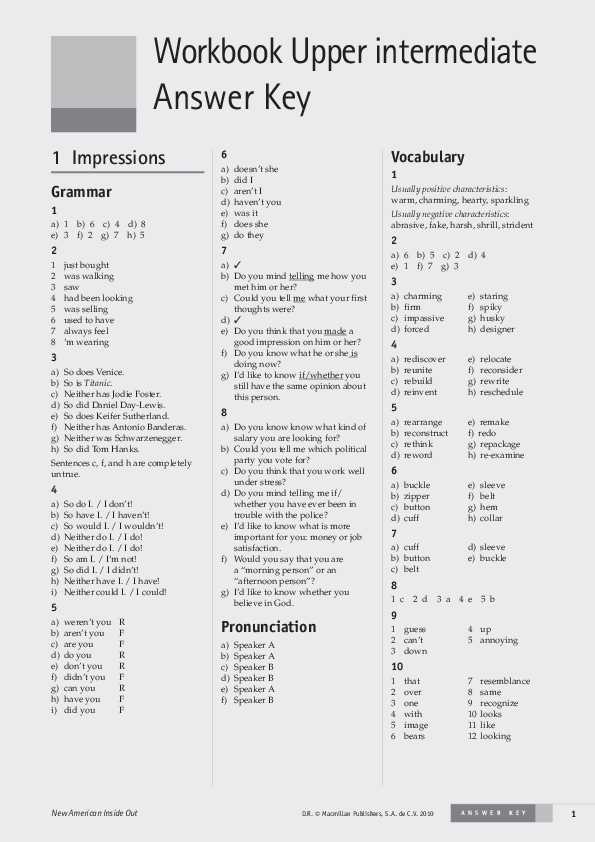
In today’s rapidly evolving world, where new technologies and ideas are constantly emerging, it’s important to find a balance between the old and the new. This applies to many areas of life, including education. While it’s crucial to embrace and incorporate new advancements into the learning process, it’s equally important not to forget the value of longstanding traditions and practices.
The concept of “Mix the Old with the New” is a solution that seeks to strike this balance. It encourages educators to combine the tried and true methods of teaching with innovative approaches to create a harmonious learning environment. By doing so, students can benefit from the best of both worlds.
By integrating traditional teaching methods with new technologies and techniques, educators can cater to different learning styles and engage students in a more meaningful way. The old methods provide a solid foundation, while the new approaches open up new possibilities for experiential learning and critical thinking.
Embrace the past

History is a valuable teacher. By embracing the past, we can gain insights into the mistakes and successes of those who came before us. This knowledge allows us to make informed decisions and avoid repeating the same errors. It also offers us a sense of identity and heritage, connecting us to our roots and helping us understand where we come from.
Incorporating elements from the past into our present can create a rich and dynamic experience. Whether it’s celebrating traditional customs and festivals or preserving historical buildings and landmarks, these tangible connections to the past help us appreciate the journey humanity has taken. They remind us of the resilience, creativity, and ingenuity of our ancestors, and instill a sense of pride in our cultural heritage.
Learning from history:
- Studying historical events and figures can provide valuable lessons in leadership, diplomacy, and conflict resolution.
- Examining past economic trends and policies can inform our decisions and strategies for the future.
- Exploring the development of technology over time can inspire innovation and help us avoid pitfalls.
Preserving the past:
- Restoring historical buildings and landmarks can enhance the beauty and character of our communities.
- Documenting oral histories and preserving cultural traditions allows us to pass down knowledge and wisdom to future generations.
- Protecting archaeological sites and artifacts ensures that our collective history is not lost or forgotten.
In conclusion, embracing the past is not about living in the past, but rather recognizing its value and incorporating it into our present and future. By learning from history and preserving our cultural heritage, we can build a more informed, vibrant, and resilient society.
Unlock the potential of tradition
Tradition is a powerful force that holds incredible value and significance. It is a link to the past, a source of wisdom and knowledge that has been passed down through generations. In today’s rapidly changing world, where new ideas and technologies are constantly emerging, it is essential to recognize and unlock the potential of tradition.
Tradition should not be seen as a hindrance or an outdated practice, but as a foundation on which to build and innovate. By embracing tradition, we can tap into its rich heritage and utilize it to add depth and meaning to our modern lives. Traditions provide a sense of identity and belonging, connecting us to our roots and giving us a sense of purpose and stability.
Embracing tradition can also foster creativity and innovation. By studying and understanding the practices of the past, we can learn from the mistakes and successes of our ancestors. This knowledge can then be used to create new, innovative solutions to the challenges we face today. The blending of tradition with modern ideas can lead to the development of unique and groundbreaking concepts that have the potential to shape the future.
- Tradition encourages community and togetherness.
- By participating in traditional celebrations and rituals, we come together as a community, forging bonds and creating lasting memories. Traditional events and practices often involve collaboration and cooperation, fostering a sense of unity and solidarity.
- Tradition provides a sense of comfort and security.
- In a rapidly changing world, tradition can offer a sense of stability and security. The familiarity of traditional customs and practices can provide comfort in times of uncertainty and act as a guiding force in our lives.
Therefore, it is crucial to unlock the potential of tradition and integrate it into our modern lives. By recognizing its value and finding ways to blend tradition with innovation, we can tap into the wisdom of the past while embracing the possibilities of the future.
Integrate modern techniques

Integrating modern techniques into traditional practices can bring numerous benefits to various fields and industries. By combining the old with the new, we have the opportunity to enhance productivity, improve efficiency, and achieve better outcomes.
1. Automation: One of the key aspects of integrating modern techniques is the use of automation. Automation can replace repetitive and time-consuming tasks with efficient and accurate processes. It allows businesses to streamline their operations, reduce costs, and increase productivity.
2. Data analysis: Another modern technique that can be integrated into traditional practices is data analysis. With advanced tools and algorithms, organizations can collect, analyze, and interpret large amounts of data to gain valuable insights. This can help them make informed decisions, identify trends, and predict future outcomes.
3. Collaborative technologies: With the advent of collaborative technologies, it has become easier than ever to connect and collaborate with teams and individuals across different locations. By integrating these technologies into traditional practices, businesses can foster collaboration, improve communication, and enhance project management.
4. Virtual reality and augmented reality: Virtual reality (VR) and augmented reality (AR) technologies are revolutionizing various industries, including education, healthcare, and entertainment. By integrating VR and AR into traditional practices, businesses can create immersive and interactive experiences, train employees more effectively, and engage customers in new and exciting ways.
5. Internet of Things (IoT): The Internet of Things (IoT) refers to the network of physical devices embedded with sensors, software, and connectivity, allowing them to collect and exchange data. By integrating IoT into traditional practices, businesses can automate processes, optimize resource utilization, and improve decision-making based on real-time data.
Overall, integrating modern techniques into traditional practices offers numerous advantages, including increased efficiency, improved decision-making, enhanced collaboration, and enhanced customer experiences. It is essential for organizations to embrace these advancements and explore ways to incorporate them into their existing workflows.
Combine the best of both worlds

In today’s rapidly changing world, it can be challenging to find a balance between the old and the new. Technology is constantly advancing, and with it comes an array of new possibilities and conveniences. However, it’s important not to forget the value and wisdom of the past. By combining the best of both worlds, we can create a harmonious and innovative future.
One way to combine the old with the new is by embracing traditional craftsmanship and enhancing it with modern technology. For example, in the field of architecture, we can incorporate timeless design principles and construction techniques while using advanced materials and sustainable technologies. This approach allows us to preserve the authenticity and charm of the past while benefiting from the efficiency and functionality of the present.
Another way to combine the best of both worlds is by integrating traditional practices with digital innovation. In the realm of education, for instance, we can blend traditional teaching methods with online platforms and interactive tools. This allows for personalized learning experiences while still emphasizing the importance of face-to-face interactions and hands-on activities. By taking advantage of both traditional and digital resources, we can create an educational environment that is dynamic, engaging, and effective.
Ultimately, combining the best of both worlds allows us to leverage the strengths of each realm and overcome their limitations. Whether it’s in the fields of art, design, business, or any other aspect of life, embracing the traditions of the past while embracing the advancements of the present can lead to remarkable outcomes. It’s all about finding the right balance and using the old and the new in synergy to achieve progress and innovation.
Discover the Benefits of Mixing Old and New
Combining elements from past and present can bring numerous benefits and enhance various aspects of our lives. By mixing the old with the new, we can create a harmonious blend that combines tradition and innovation in a unique way.
Preservation of heritage: Utilizing traditional styles, materials, and techniques alongside modern design can help preserve our cultural heritage. By incorporating elements from the past, we can pay homage to history and maintain a connection to our roots.
Creating timeless designs: Mixing old and new elements in design can result in timeless aesthetics that stand the test of time. Combining classic architectural features with contemporary finishes, for example, can create a cohesive and visually appealing space that remains stylish for years to come.
Fostering creativity: Mixing old and new can inspire creativity and push boundaries. The combination of different styles, eras, and technologies allows for innovative ideas and the exploration of new possibilities. It encourages us to think outside the box and create something truly unique.
Providing functionality: Leveraging modern advancements while incorporating traditional elements can result in functional and efficient spaces. By integrating smart home technology, for instance, into a historic building, we can enhance its functionality and convenience without compromising its original charm.
Preserving sustainability: By refurbishing and repurposing old items or materials, we can contribute to sustainable practices. Using reclaimed wood in furniture or incorporating vintage pieces in interior design not only adds character but also reduces waste and promotes a more eco-friendly approach.
Creating a sense of nostalgia: The combination of old and new can evoke feelings of nostalgia and create a sense of comfort and familiarity. Incorporating vintage elements in our surroundings allows us to reminisce and connect with memories and experiences from the past.
In conclusion, mixing the old with the new offers a plethora of benefits, ranging from preserving our heritage to fostering creativity and providing functionality. By embracing the combination of tradition and innovation, we can create unique and harmonious spaces that enrich our lives in various ways.
Take your approach to the next level

Incorporating both old and new elements into your approach can help you stand out and create a unique experience for your audience. By blending traditional and modern techniques, you can take your work to the next level and make a lasting impact.
Here are some key takeaways to consider:
- Embrace innovation: Don’t be afraid to experiment with new ideas and techniques. Push boundaries and explore new possibilities to create innovative and fresh work.
- Respect the past: Don’t forget the roots of your craft. Honor and draw inspiration from the traditional methods and techniques that have shaped your field.
- Combine old and new: Look for ways to blend the old with the new. Incorporate elements from different eras, styles, or technologies to create a dynamic and captivating approach.
- Seek inspiration: Stay curious and open-minded. Look for inspiration in various sources, such as art, history, technology, and culture. Constantly exposing yourself to new ideas can help you evolve your approach.
- Take risks: Don’t be afraid to take risks and step outside of your comfort zone. Embracing the unknown can lead to breakthroughs and new discoveries in your work.
In conclusion, mixing the old with the new can be a powerful way to elevate your approach. By combining traditional and modern elements, you can create work that is both timeless and contemporary. Embrace innovation, respect the past, and seek inspiration to take your approach to the next level. So go ahead, experiment, and let your creativity flourish!
Q&A:
What does “Take your approach to the next level” mean?
“Take your approach to the next level” means to improve or elevate your current method or strategy to achieve better results or performance.
How can I take my approach to the next level?
You can take your approach to the next level by analyzing your current strategy and identifying areas for improvement. This can involve seeking out new information, learning new skills, or experimenting with different techniques. It’s also important to be open to feedback and continuously adapt your approach based on the results you achieve.
Why is it important to take your approach to the next level?
It is important to take your approach to the next level in order to stay competitive and achieve your goals more effectively. By continuously improving and evolving your approach, you can adapt to changing circumstances, overcome challenges, and maximize your potential for success.
What are some examples of taking your approach to the next level?
Some examples of taking your approach to the next level can include implementing new technologies or tools to streamline processes, seeking additional education or certifications to enhance your skills, or networking with industry professionals to gain new perspectives and insights.
Can taking your approach to the next level lead to success?
Yes, taking your approach to the next level can greatly increase your chances of success. By constantly seeking improvement and pushing the boundaries of your current approach, you are better positioned to achieve your goals and reach new heights in your personal or professional endeavors.